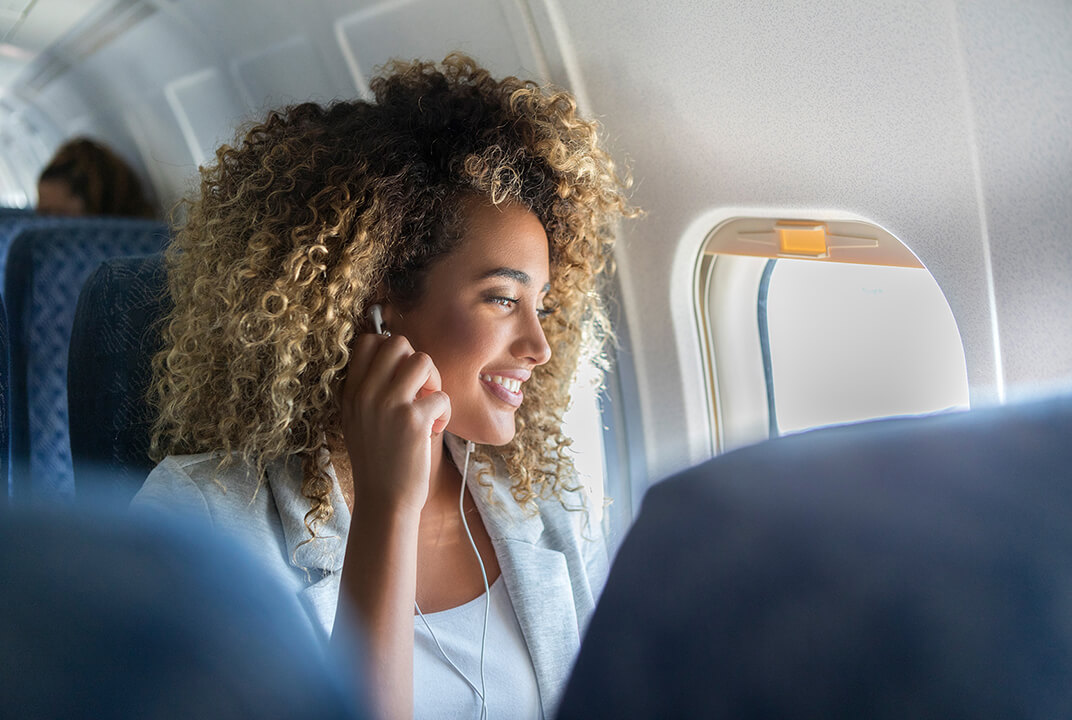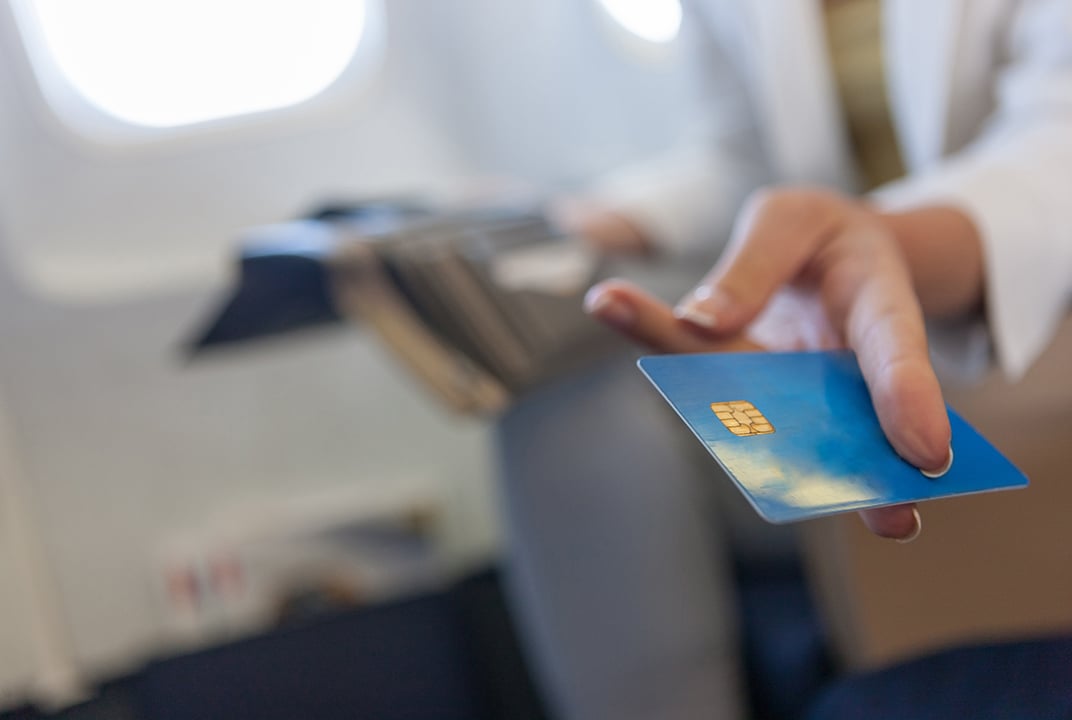Insight | Who pays? Analysing the world of inflight connectivity business models
Who pays? Analysing the world of inflight connectivity business models
Aviation
The recent step change in IFC solutions has been mirrored in the world of business models. Premium and sponsored access currently dominate. Here's why
Business revolutions don’t happen overnight. Periods of great change always have a beginning, a middle and an end. As such, these moments of upheaval can take years to play out.
According to Asbjorn Christoffersen, Inmarsat’s Vice President of Airline Connectivity, IFC business models had, until recently, remained “surprisingly static”. They tended to revolve around airlines or network operators targeting business travellers, commanding premium user fees for access, and providing a payment experience that evolved around credit card payments through the on-board web portal.
Thanks to lower bandwidth cost and the technological advancements offered by high-throughput networks like Inmarsat’s high-speed, global broadband GX Aviation and its bespoke European solution, European Aviation Network (EAN), this is rapidly changing. Inflight digital experiences, at affordable price points, can now be virtually identical to those passengers encounter on the ground.
And while this is great news for flyers, the question of how to bring this game-changing technology to customers still remains.
"At least part of the inflight Wi-Fi service needs to be free-of-charge to passengers"
Different models for different airlines
What’s clear is that this isn’t a one-size-fits-all proposition. Airlines will agree on the need to improve conversion rates, but they differ on the methods used to achieve this. As such, there are two core models – which can be combined - being offered by most carriers: Premium and Sponsored access.
Whatever model is chosen, however, Christoffersen suggests that there are two fundamental barriers that need to be overcome in order to unlock the full potential of IFC: ease of access and a lower price barrier.
He explains: “Firstly, user access and payment for the inflight Wi-Fi service has to be instant and automated. Secondly, at least part of the inflight Wi-Fi service needs to be free-of-charge to passengers.”
Christoffersen says that Inmarsat is enabling airlines to pursue either business model by focusing on two major paths.
The first path is to enable advanced roaming services together with our partner Deutsche Telekom, allowing subscribers of mobile network operators and Wi-Fi service providers to automatically access the inflight Wi-Fi service.
“We already have the technology – such as Passpoint – to fully emulate the cellular roaming experience that we all know from travelling abroad,” Christoffersen explains.
“Merely turn on your smartphone and start using the inflight Wi-Fi services. It’s a plug-and play experience that is the key reason why 40% of mobile subscribers in Europe actively use cellular roaming services when abroad. At Inmarsat we are now bringing these advanced roaming services to the W-IFC space. Starting with mobile app based roaming – using the WISPr technology – we’ll expect to rapidly transition to fully automated cellular style roaming using the Passpoint technology.”
Christoffersen clarifies that passengers are billed via their regular mobile network subscription and that many roaming partners will in fact choose to bundle the inflight pricing into the subscriber’s regular monthly subscription fee.
The other path is to enable sponsored inflight connectivity services through a range of portal and back-end services.
He explains: “Sponsors obviously require a positive ROI in turn for funding an inflight Wi-Fi session. We enable this by providing sponsors with media inventory throughout multiple passenger touchpoints, such as the on-board portal, in-cabin adverts, inflight magazines, airline tickets, lounges and so on. Implementing calls to actions, such as encouraging passengers to sign up to the sponsor’s newsletter or purchase the sponsor’s product offerings online also adds value to sponsors.”
The sponsored access proposal is a compelling one. Advertisers and sponsors recognise that an aircraft cabin offers one of the few truly captive audiences that can be targeted directly. Advertisers and sponsors will pay to engage with this audience by providing free-of-charge Wi-Fi sessions to the passenger.
The take up rate is certainly impressive. Says Christoffersen: “Interestingly when we see sponsored access services being offered in the market, suddenly the take-up rate within that cabin may change from less than 10% to over 40%. So the value is well perceived by passengers.”
Inmarsat’s role is to work with the airlines, the sponsors and advertisers, and deliver a palette of onboard portal and back end features needed to make Wi-Fi sponsorships commercially viable.
“So really it’s an ecosystem that consists of at least three parties and Inmarsat is in the middle of that,” says Christoffersen.
Inmarsat is currently in the process of rolling out numerous sponsored access initiatives. While most are still to be announced, a recent successful sponsorship campaign was carried out with the German LCC, Eurowings, in Q4 2018, where Deutsche Telekom sponsored 10 minutes of Wi-Fi services to all passengers.
Airline Wi-Fi: A package overview
Norwegian
The airline offers two packages: Basic and Premium
Basic
This option is free and will allow passengers to browse the web, use social media, send and receive emails and instant messages on their personal devices for the duration of the flight.
Premium
High-speed Wi-Fi, fast enough to stream music, movies and TV, is available at an introductory price of $14.95/€12.95 (customers can choose their currency) for a three-hour package.
Air New Zealand
The flag carrier airline of New Zealand is currently offering free full flight Wi-Fi on all IFC-enabled aircraft.
Qatar
Passengers are offered an hour’s free access to the service, after which full-flight access can be purchased.
Lufthansa and Austrian Airlines
Passengers can access the service on the device of their choice via Lufthansa’s FlyNet portal. Three packages are available, allowing passengers to choose the appropriate tier depending on whether they want to stream videos, surf the web or merely send emails or use a messaging service. These are:
*FlyNet Message: €3
*FlyNet Surf: €7
*FlyNet Stream: €12
Eurowings
Connect S (€3.90 per flight) will allow flyers to use messaging services; Connect M (€6.90 per flight) will enable passengers to browse the internet), while the deluxe option, Connect L (€11.90 per flight), will support streaming services.
Quality at all costs
As inflight Wi-Fi becomes increasingly widespread, it will be fascinating to see if one clear model becomes the favoured choice for carriers. But whatever model airlines choose, the key point to consider is that however IFC is provided, the service has to be robust enough to deliver quality seamless connectivity.


